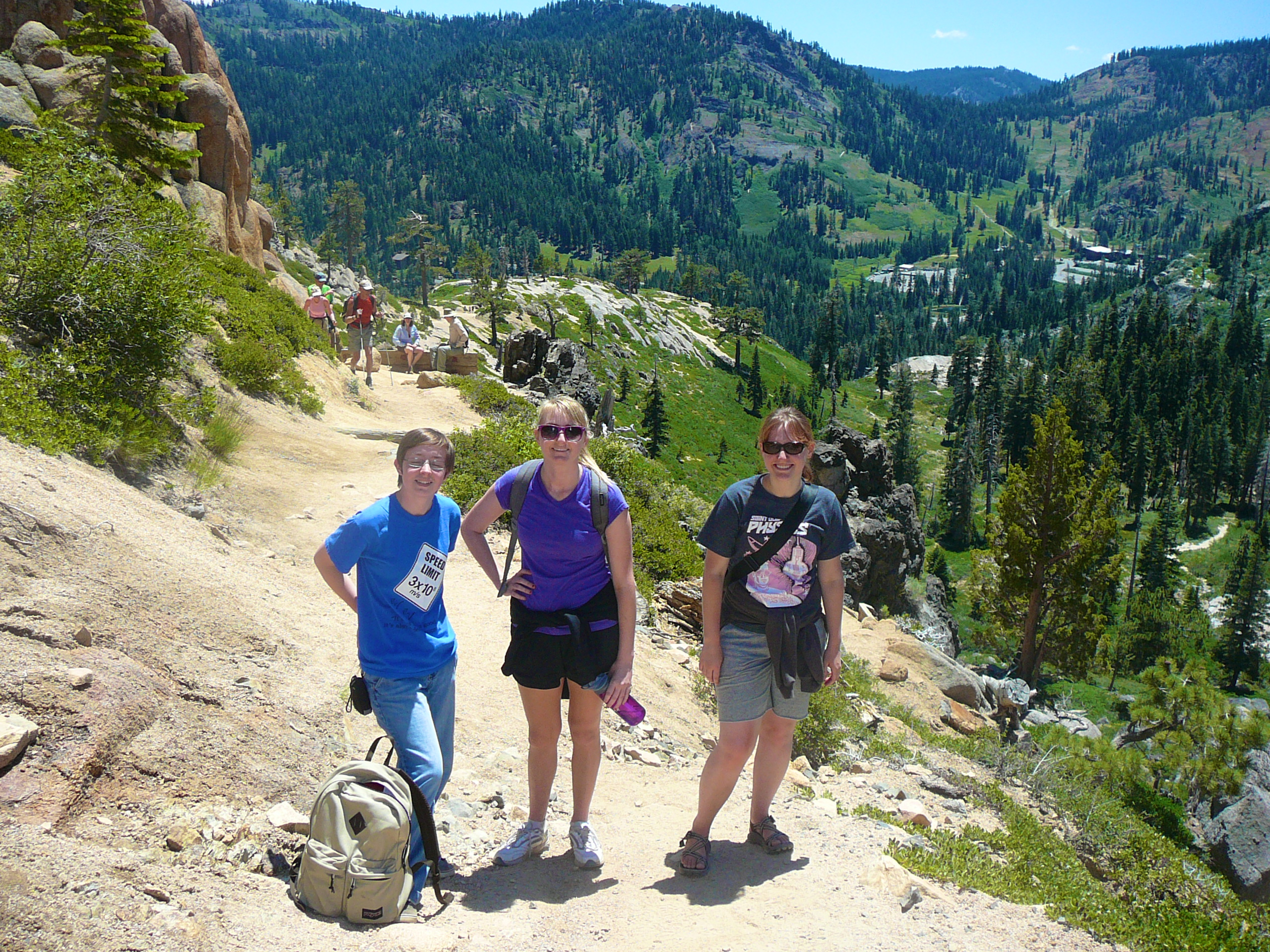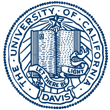
This REU program was funded through NSF PHY-1263201.
San Francisco
We spent the first Saturday of the program in San Francisco. We began at the Exploratorium science museum, in its new home on a pier overlooking the San Francisco Bay. During the morning we puzzled over the perception of colored rings upon rotation of broken black-and-white circles, the chaotic behavior of a triple pendulum, and the bizarreness of simple water-cornstarch mixtures under vibration. We walked to the Ferry Building farmer's market for lunch. People then split into smaller groups, some returning to the Exploratorium, others climbing to Coit Tower, and still others seeing the sea lions at Pier 39 (about 20 are sunning themselves on the more distant piers in the right-hand picture) and getting chocolate at Ghirardelli's. The day ended with dinner in Chinatown.
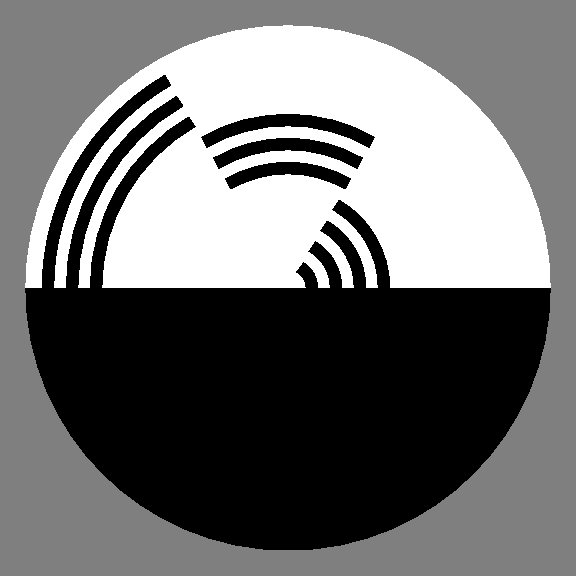
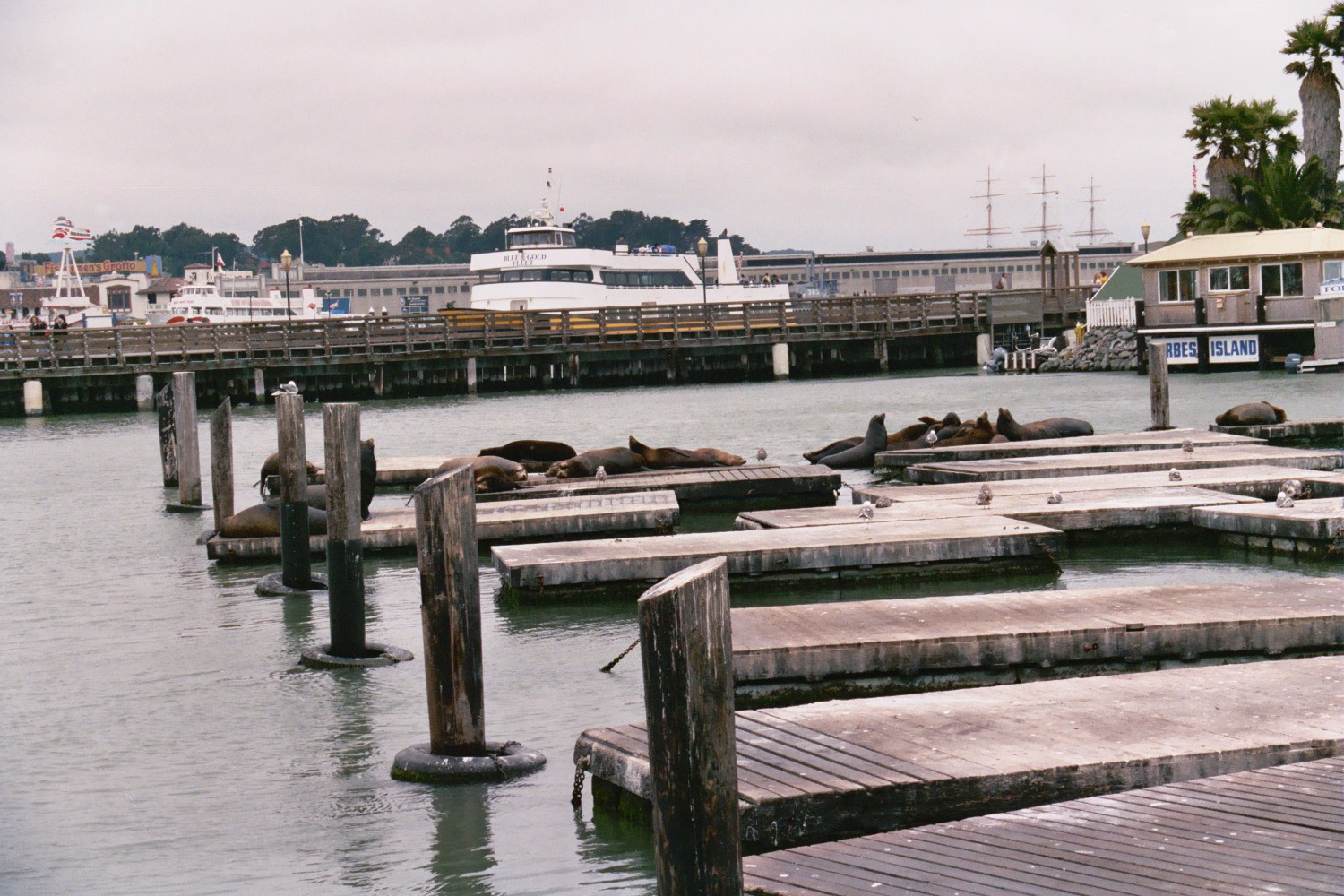
Crocker Nuclear Laboratory
Crocker Laboratory, on the UC Davis campus, houses a cyclotron that gave a second life to components of what was once the world's premier cyclotron, built by Ernest Lawrence. The Davis cyclotron has never been among the highest-energy machines in the world, but it occupies its own niche. It has been used to date historical documents, including a Gutenberg Bible; to make radioisotopes for medical purposes; to treat eye tumors with proton irradiation; and to simulate the effects of cosmic rays, which fall in its energy range. The REU group got a private tour from scientists working at the cyclotron.
Big Basin Redwoods and Lick Observatory
We again went to Big Basin Redwoods State Park and Lick Observatory as a single-day trip. On our moderate hike at Big Basin we encountered some of the largest redwoods in the park, such as the nearly 300-foot tall "Mother of the Forest" tree with a 70-foot circumference near the ground. We then drove to Lick Observatory, over roads apparently designed to torture those susceptible to carsickness. (Actually the slow grade and many turns are because the road to Lick was originally a horse trail. Horse-drawn wagons can turn quite sharply, but steep sections would be a serious problem.) We ate food that we had brought along, then were treated to a tour with one of the Lick astronomers and two assistants. They discussed the history and current uses of the observatory's 10 telescopes and told the personal story of James Lick, whose bequest started the facility. We ended by viewed several objects through the 36-inch refracting telescope, which was the largest in the world when it was built in the late 1880's and remains the third-largest refracting telescope.
Lassen Volcanic National Park
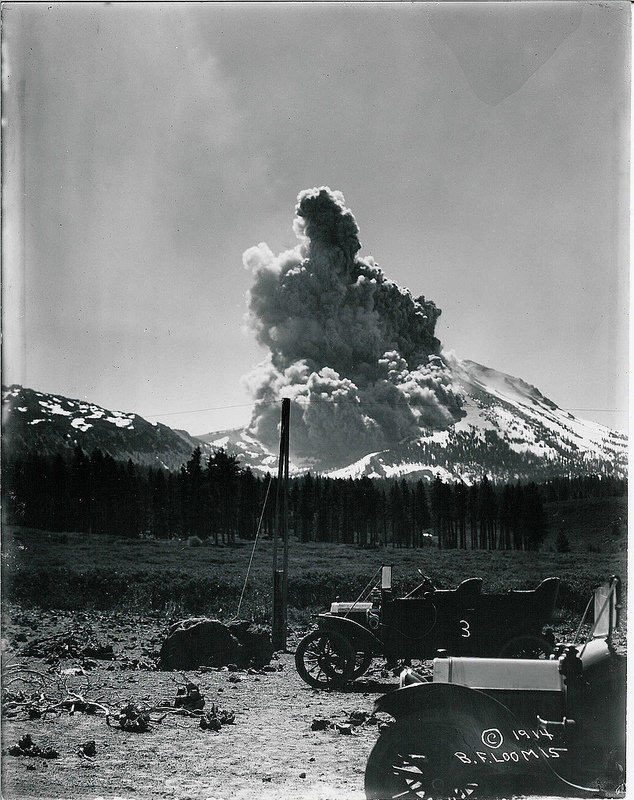
We repeated last year's trip to Lassen National Park, with the same main stops: the Subway Cave lava tube, the Cinder Cone, Butte and Manzanita lakes, and Bumpass Hell. The visitor center at Manzanita Lake displays enlargements of several photographs that B.F. Loomis took of Mount Lassen's June 9, 1914 eruption, including the one shown above. We stopped briefly at the Loomis Hot Rock, a several-ton boulder carried down Mount Lassen by flowing lava. It landed several miles from the peak and was still too hot to touch three days later when Loomis photographed it. We continued to the King's Creek picnic area for lunch. We then divided up, with one group making a one-way hike to the Bumpass Hell hydrothermal area's fumaroles and boiling mudpots while the rest drove to a closer parking lot and did a shorter round-trip hike.
Lake Tahoe
Professor Shirley Chiang and her husband Bill Graves again welcomed the entire REU group to their home in Squaw Valley, just north of Lake Tahoe. The trip began with a visit to the Tahoe Environmental Research Center's Tahoe City branch, located in an old fish hatchery. Saturday afternoon included a trip to the Tahoe City beach. Supervised by Bill, several REU students helped prepare the large Saturday dinner (left).
